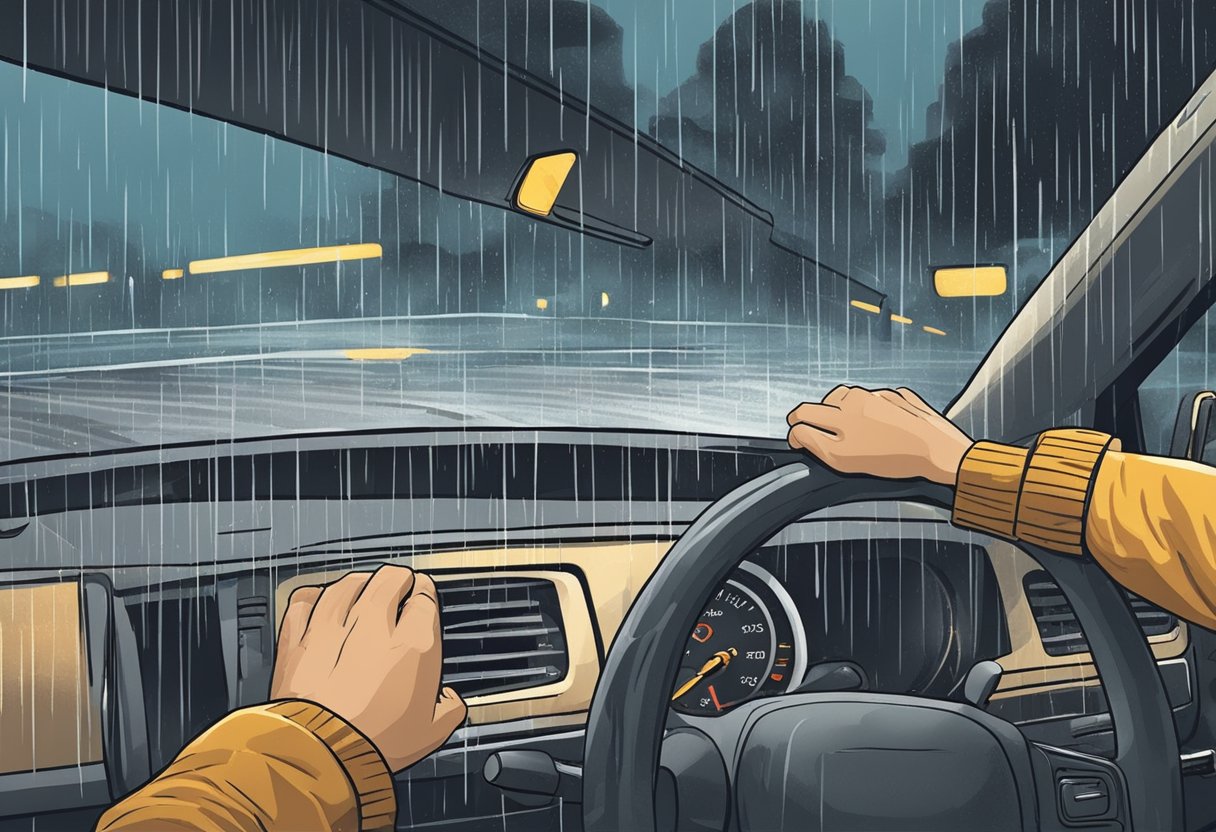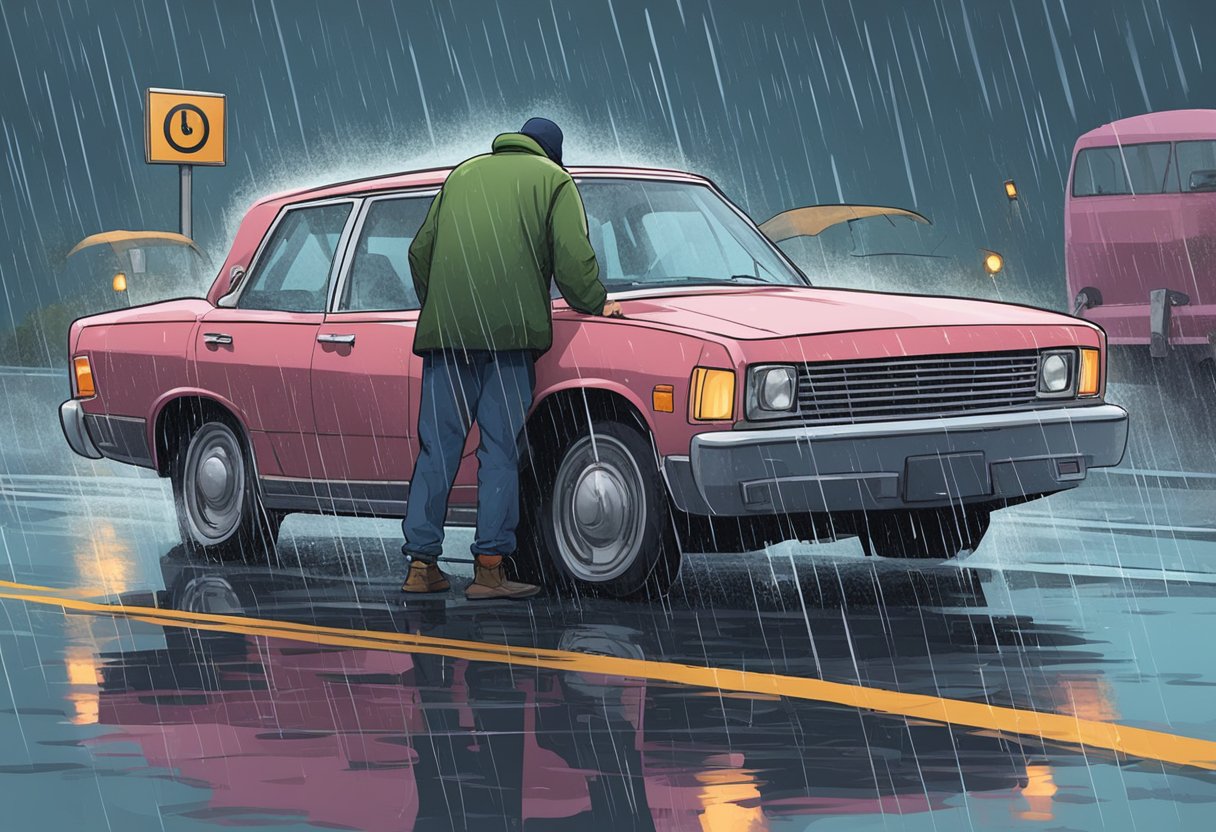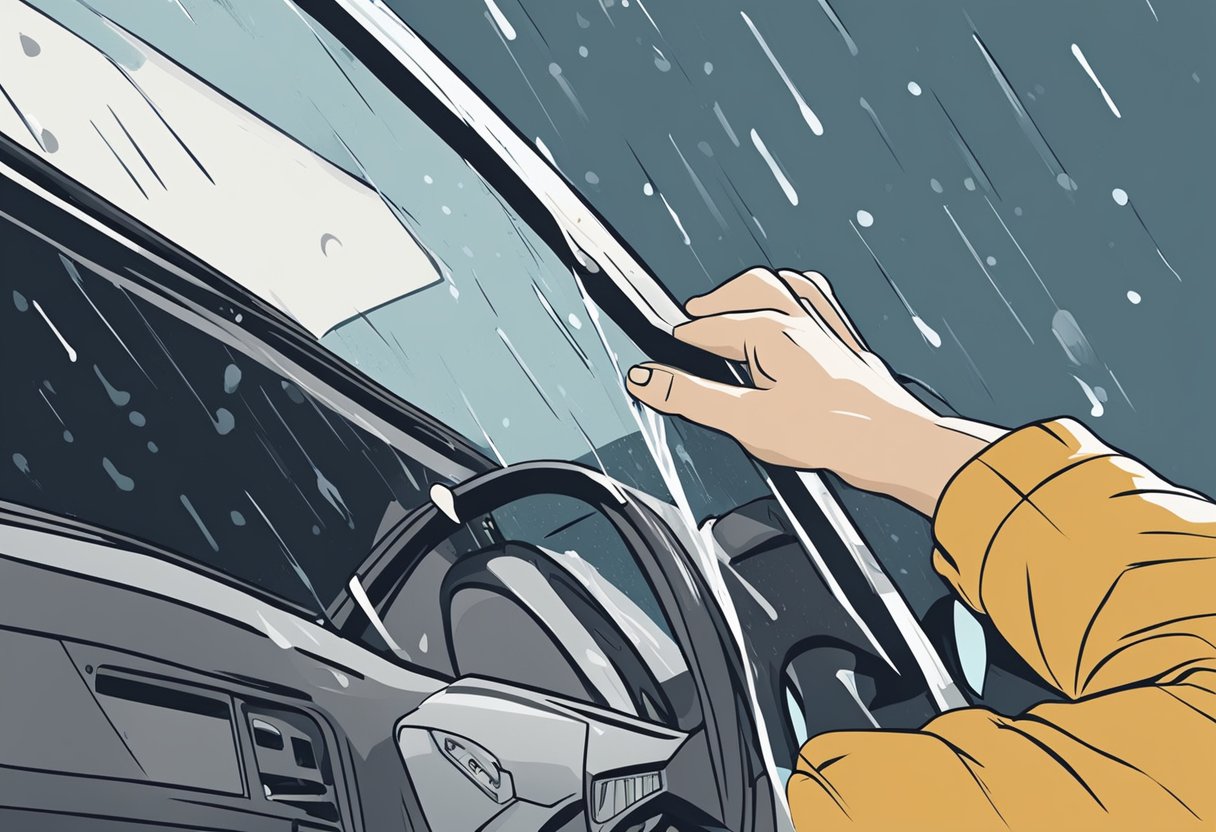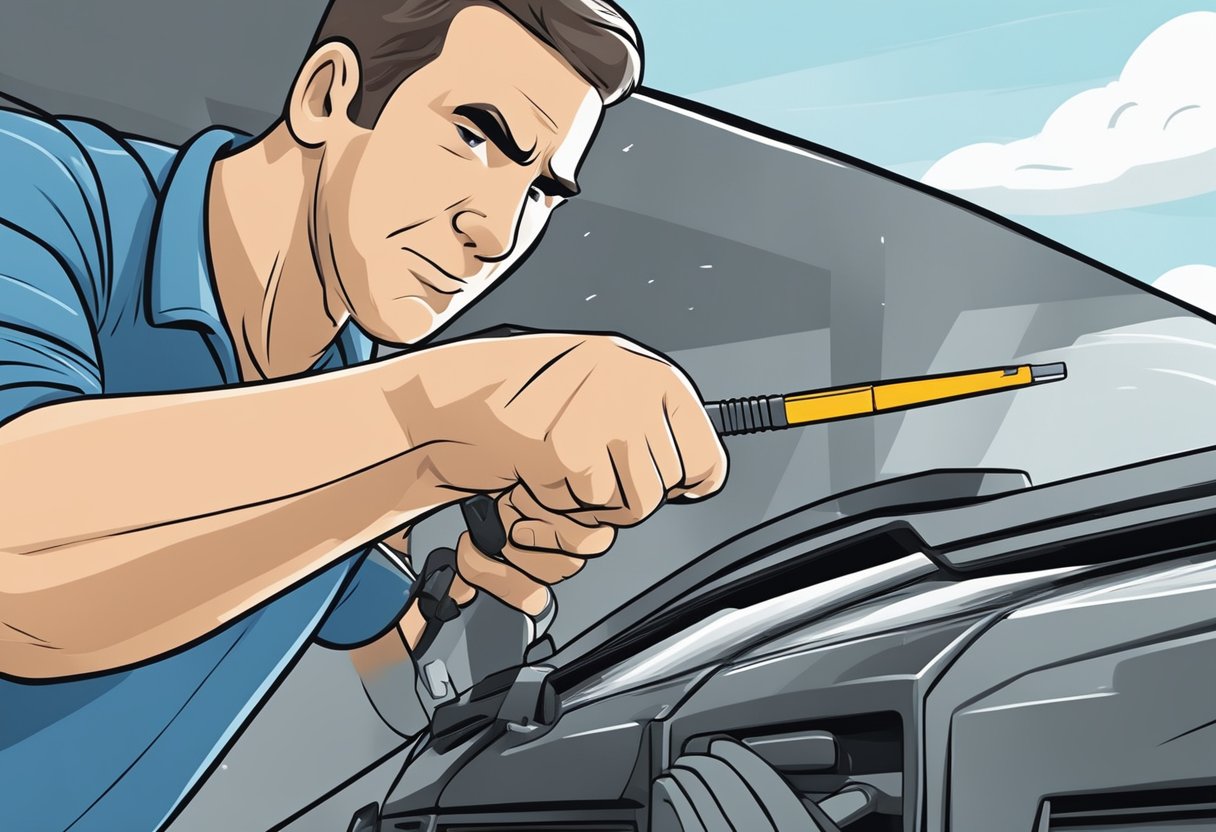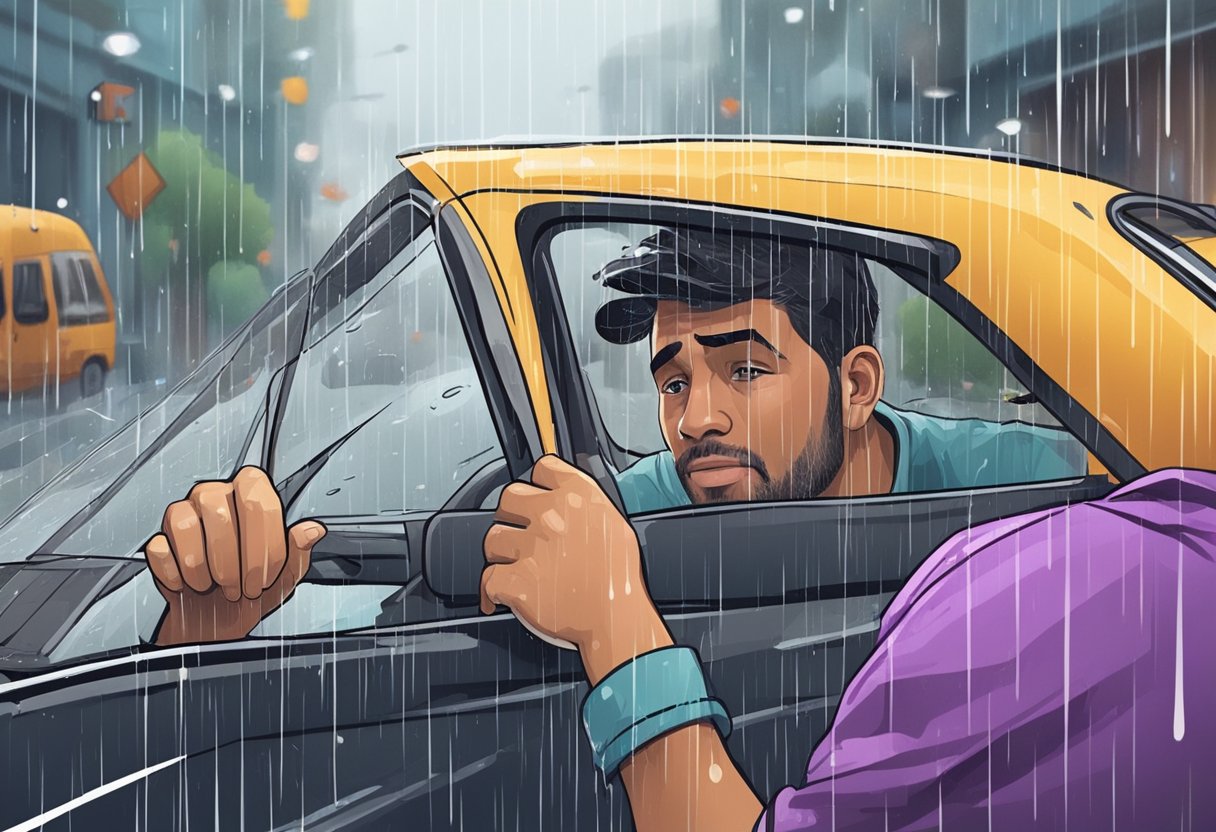When it comes to your safety on the road, having properly functioning windshield wipers is crucial. However, what happens when your wipers won’t turn off? Not only can it be frustrating, but it can also hinder your visibility while driving. Fortunately, there are several solutions to this problem that you can try on your own.
One of the most common reasons why your windshield wipers won’t turn off is due to a faulty control switch. This switch is responsible for starting, stopping, and changing the speed of your wipers. If it has any electrical issues, then you will likely be unable to turn off your wipers. Another possible culprit is a failed relay, which can cause your wipers to continue working even when turned off. According to The Family Handyman, changing the wiper relay is the easiest approach and it might solve your problem. Wiper relays usually cost less than $20.
If neither the control switch nor the relay is the problem, then it could be due to wiring issues in your wiper system. This can cause your wipers to stay on because power keeps flowing to them. To fix this issue, you may need to check the wiring and connections in your wiper system. This can be a bit more complicated, so you may want to consult a professional mechanic for help.
Understanding Your Windshield Wiper System
Components of the Wiper System
Your car’s windshield wiper system is made up of several components, including the wiper motor, control switch, wiper arms, wiper blades, and wiper transmission. The wiper motor is located under the hood and is responsible for powering the wiper blades. The control switch is located on the steering column and allows you to turn the wipers on and off. The wiper arms are attached to the wiper motor and hold the wiper blades. The wiper blades are the rubber blades that wipe the windshield clean. The wiper transmission is the mechanism that connects the wiper motor to the wiper arms.
How Does the Wiper System Work?
When you turn on the wiper switch, an electrical circuit is completed, which sends power to the wiper motor. The wiper motor then moves the wiper transmission, which in turn moves the wiper arms and blades back and forth across the windshield. The wiper arms and blades are designed to sweep across the windshield in a smooth, fluid motion, clearing away rain, snow, and debris.
If your windshield wipers won’t turn off, it could be due to a faulty control switch, relay, or park switch issues. A failed relay can mean the wipers won’t work at all, or they may continue to work even when turned off. Changing the wiper relay is the easiest approach and it might solve your problem. Wiper relays usually cost less than $20. If the park switch is faulty, the wipers may not park in the correct position when turned off, which can cause them to continue to move when turned off.
In summary, understanding the components and function of your windshield wiper system can help you diagnose and fix any issues that may arise. If you are experiencing problems with your wipers, it is important to have them inspected and repaired by a trusted mechanic to ensure your safety on the road.
Common Windshield Wiper Issues
If your windshield wipers won’t turn off, you may be dealing with a malfunction in your wiper system. There are several common issues that can cause this problem, including electrical and wiring problems, as well as mechanical failures.
Electrical and Wiring Problems
One of the most common causes of windshield wipers not turning off is a wiring issue. Over time, the wiring in your wiper system can become damaged or develop loose connections, which can cause short circuits and other problems. If you suspect a wiring issue, it’s important to have your wiper system inspected by a qualified mechanic.
Another possible cause of electrical problems is a faulty relay. The wiper relay is responsible for sending power to the wiper motor, and if it fails, your wipers may continue to run even when turned off. In this case, replacing the wiper relay is the easiest approach and it might solve your problem. Wiper relays usually cost less than $20.
Mechanical Failures
Mechanical failures can also cause windshield wiper problems. For example, a bad park switch can cause your wipers to continue running even when turned off. The park switch is responsible for positioning the wipers at the bottom of the windshield when turned off, and if it fails, your wipers may continue to run.
Another possible mechanical failure is a damaged wiper switch. The switch that’s activated when you turn the wipers on and off, and it has lots of complex parts that can wear out or become damaged over time. If your wipers won’t turn off, it’s possible that the switch is to blame.
In conclusion, when dealing with stubborn windshield wipers that won’t turn off, there are a few common issues to consider. Whether it’s a wiring issue, a faulty relay, or a mechanical failure, it’s important to have your wiper system inspected by a qualified mechanic to determine the root cause of the problem.
Troubleshooting and Fixes
If your windshield wipers won’t turn off, there are a few things you can do to troubleshoot and fix the issue. Here are some steps you can take to get your wipers working properly again.
Inspecting for Visible Damage
Start by inspecting your wiper blades. If they are worn or damaged, they may not be able to properly wipe away moisture or debris from your windshield. If you notice any visible damage, replace the wiper blades with new ones. This is a simple and inexpensive fix that can make a big difference in the performance of your wipers.
Checking Electrical Connections
Check the electrical connections to your wiper motor and control switch. If these connections are loose or corroded, they can cause your wipers to malfunction. Use a multimeter to test the connections and make sure they are working properly. If you find any issues, clean or replace the connections as needed.
Replacing Faulty Components
If your wipers still won’t turn off after inspecting for visible damage and checking electrical connections, you may need to replace faulty components. The park switch, wiper relay, and wiper motor are all potential culprits. Consult your vehicle’s manual to locate these parts and determine which one is causing the issue. Then, purchase replacement parts and install them according to the manufacturer’s instructions.
Overall, fixing stubborn windshield wipers that won’t turn off requires some troubleshooting and potentially some replacement parts. By inspecting for visible damage, checking electrical connections, and replacing faulty components, you can get your wipers working properly again.
Can a DIY Driveshaft Replacement Cause Windshield Wipers to Malfunction?
When considering DIY driveshaft replacement steps, it’s important to note that improperly performed work can affect other parts of the vehicle. Although it may seem unrelated, a faulty driveshaft replacement can cause unexpected issues, such as windshield wiper malfunctions. It’s crucial to follow instructions closely and seek professional help if needed.
Preventative Maintenance and Care
To avoid having to deal with stubborn windshield wipers that won’t turn off, it’s important to take proper care of them. Here are some preventative maintenance and care tips to help keep your wipers in good working condition.
Regular Cleaning and Inspection
Regular cleaning and inspection of your windshield wipers can help prevent issues with smearing, streaks, and water beads. You can clean your wiper blades by wiping them down with a soft cloth or paper towel and some windshield washer fluid. Be sure to also inspect the blades for any signs of wear or damage.
If you notice any leaks or streaks, it may be time to replace your wiper blades. You can also try using a wax remover or grease-cutting product to remove any buildup on the blades that may be causing chattering or smearing.
Replacing Wiper Blades
Worn wiper blades can cause a number of issues, including streaks, smearing, and water repellent. It’s recommended that you replace your wiper blades every six months to a year, depending on how often you use them and the climate you live in.
When replacing your wiper blades, be sure to choose the right size and type for your vehicle. You can find this information in your owner’s manual or by checking with your local auto parts store. It’s also important to properly install the new blades to ensure they work correctly.
By following these preventative maintenance and care tips, you can help ensure that your windshield wipers stay in good working condition and avoid the frustration of dealing with stubborn wipers that won’t turn off.
When to Seek Professional Help
Sometimes, despite your best efforts, your windshield wipers may still refuse to turn off. In such cases, it is best to seek the help of a professional mechanic who can diagnose and fix the issue for you. Here are some signs that indicate it’s time to take your car to a trusted mechanic:
-
Wipers won’t turn off: If you’ve tried all the DIY fixes and your wipers still won’t turn off, it’s time to take your car to a mechanic. They have the tools and expertise to diagnose and fix the issue quickly and efficiently.
-
Wipers turn on randomly: If your wipers turn on by themselves, it could be a sign of a faulty switch or motor. A professional mechanic can inspect your car’s electrical system and identify the root cause of the problem.
-
Wipers are not working at all: If your wipers are not working at all, it could be due to a blown fuse, faulty motor, or a damaged linkage. A professional mechanic can perform a thorough inspection to identify the issue and provide a solution.
It is important to note that attempting to fix complex electrical issues on your own can be dangerous and may cause further damage to your car. Therefore, it is always best to seek the help of a professional mechanic when dealing with stubborn windshield wipers that won’t turn off.
As an Amazon Associate we earn from qualifying purchases.








